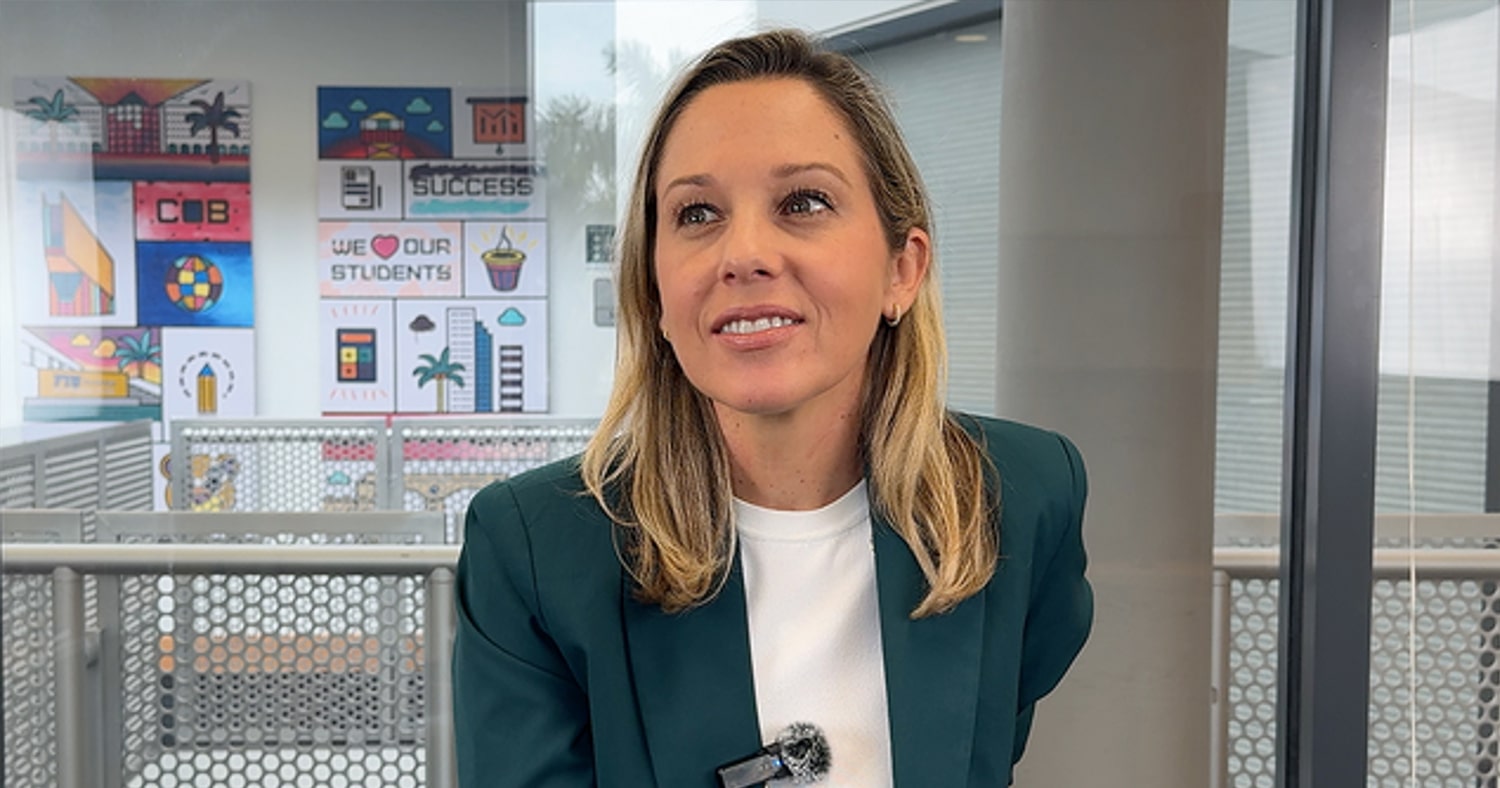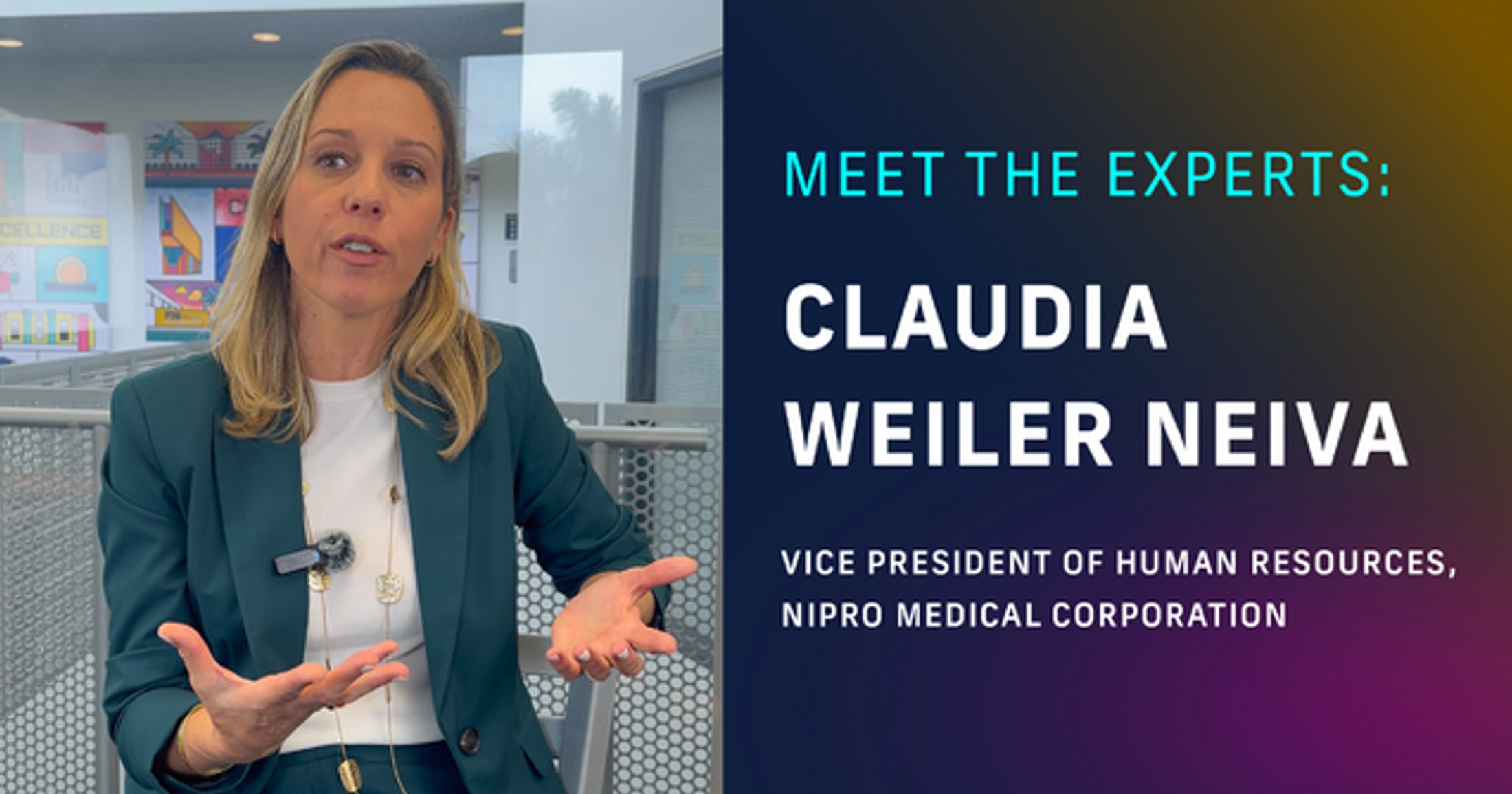Human Resource Management (HRM) is a vital function in any organization, focused on managing the most valuable asset: people. Strong leadership is essential in the HR field as the profession becomes more global and technology focused.
Becoming a Valuable Asset to your Company
Becoming a leader in HRM requires a blend of education, experience, skills and personal attributes.
Claudia Weiler Neiva got a Master of Science in Human Resource Management degree from FIU’s Chapman Graduate School of Business. She is currently the vice president of human resources at NIPRO Medical Corporation, and now provides advice for individuals aspiring to become leaders in human resource management.
First off, she emphasizes thoroughly getting to know the business inside and out. Understand how the company makes money, what the main processes are and what customers expect. Speaking the business language and getting close to operations is key.
Weiler Neiva says it's important not to focus too much on HR processes and forget about the main business goals. As an HR professional, you focus on human resources, organizational culture, and managing people to impact the company's results. Your goal is to improve the company's performance through these areas. By concentrating on these aspects, you can help drive the company forward.
She also suggests gaining experience across different HR functions. Start in talent acquisition, then move on to learning and development. Make sure to also learn technical skills like payroll, compensation and employee relations.
Once you understand a business well and have various HR skills, you will be prepared to succeed as a strong HR leader. Having a solid grasp of business is essential. In addition, possessing a wide range of HR skills is important. Combining these two elements will set you up for success as an HR leader.
“I think to become an HR leader, you must be able to influence from the HR perspective. Bringing the right organizational culture, people and strategy to make the difference for the results of that company.”
Understanding Legislation and Company Culture
Understanding laws and customs in various countries is crucial for HR leaders in the global market today. A deep understanding of these elements not only ensures compliance but also fosters a collaborative and productive work environment. HR professionals must gain experience in multi-national environments to fully grasp the context of varying legislations and cultural differences.
This helps you create strong HR policies that follow local labor laws and promote a unified company culture worldwide. This level of experience proves invaluable in navigating the complexities of global operations and ensuring the effective implementation of HR strategies worldwide.
To stay informed about new laws, continue learning and sign up for newsletters. Attend HR conferences where experts discuss challenges and solutions.
SHRM offers certifications and webinars, while HCI provides research and training. Both are valuable resources for human resource professionals.
To keep abreast and maintain connections in the field, consider perusing HR Magazine and HR Dive. Participating in the SHRM Annual Conference can also be beneficial. Engaging on LinkedIn and Twitter is another method to remain linked.
Websites like the U.S. Department of Labor and EEOC offer important legal information. Local SHRM chapters have resources and events tailored to your area.
Aligning Company’s Strategy with HR Management
Experienced HR leaders always keep the company strategy in focus, ensuring that the organizational structure aligns with these goals. To be a successful HR leader, you need to know about management systems and have experience with different types of organizations.
Strategy First: The Foundation of Organizational Success
Claudia Weiler Neiva states that the structure should align with the strategy and demonstrate its relationship. This highlights the necessity for companies to first develop a clear and concise strategy before determining their organizational structure. The structure chosen must support the objectives of scaling up, enhancing customer-centricity, or driving innovation.
Step 2: The Right Organizational Structure According to Strategy
Different organizational structures offer unique advantages and challenges, each suited to specific strategic planning goals. For example, if you were to implement a divisional organization, you could consider Johnson & Johnson as your model. This multi-national corporation has three major divisions: Consumer Health, Medical Devices, and Pharmaceuticals.
Each division operates semi-independently, focusing on specific customer needs and market demands. Using this setup allows you to focus on your customer's needs, stay accountable and meet local healthcare needs. This ensures that your products are suitable for different regions.
Watch this video by Weiler Neiva to learn about different business structures and find the best one for your company.
Step 3 People: The Heart of HR Policies
After establishing the strategy and structure, the focus shifts to people. HR specialists are crucial for overseeing employees, ensuring they align with company objectives, and addressing their personal requirements. Understanding the challenges and benefits of different organizational structures is essential for HR to effectively support the company's objectives.
With strategic vision, technical, and people skills, you can confidently advance on your path to leadership in HR management.
FIU Chapman Graduate School of Business Master of Science in Human Resource Management
The MS in HR Management program at FIU helps HR professionals enhance their abilities in personnel management. The curriculum focuses on developing key competencies needed for success in human resource management. Students in this program can gain practical skills and knowledge that they can apply in real-world HR settings.
Visit the program website to learn more about the Master of Science in Human Resource Management program at the FIU Chapman Graduate School of Business.
To hear more tips from Claudia Weiler Neiva, check out her interview:


